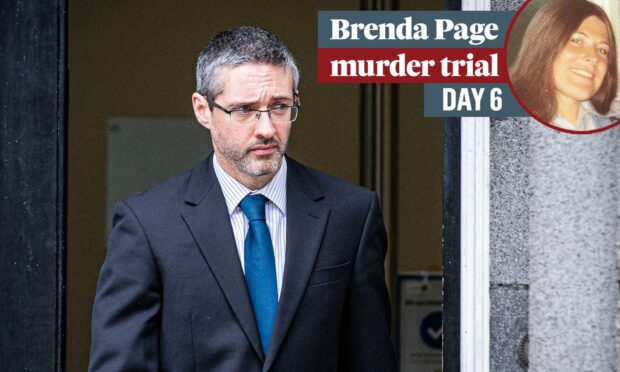The DNA profile of the man accused of murdering Brenda Page was found on bedclothes recovered from the crime scene, a court has heard.
On the sixth day of the murder trial, forensic scientist Andrew Gibb told the High Court in Aberdeen that Christopher Harrisson’s DNA profile was discovered on both a duvet and a bed sheet belonging to Dr Page.
Cambridge-educated Gibb, 46, concluded in his report of the evidence that “no DNA attributable to anyone other than Christopher Harrisson or Brenda Page was detected”.
Dr Page’s body was discovered in her Aberdeen flat on Allan Street in July 1978. She had been repeatedly struck on the head, face and body with a blunt implement.
Harrisson, 82, has denied murdering her.
Gibb, who works as a forensic scientist for the Scottish Police Authority, told the jury he examined a series of items from Dr Page’s flat.
He concluded: “No DNA attributable to anyone other than Christopher Harrisson or Brenda Page was detected on any of the samples tested and detailed in this report.”
Asked by prosecuting advocate depute Alex Prentice what this meant, Mr Gibb elaborated, stating: “Of all the interpretable results we got from all the analysis we undertook, all the interpretable results showed DNA for Brenda Page or Christopher Harrisson.
“All the other results showed either a ‘no result’ or traces or of mixed DNA profiles.”
“All detectable DNA was attributable to Christopher Harrisson or Brenda Page?” Mr Prentice asked.
Mr Gibb replied: “All the interpretable DNA.”
Mr Gibb had earlier told the court that sperm found on a duvet at the murder scene was 590 million times more likely to have come from Harrisson than another male.
While another DNA profile found on a fitted bedsheet belonging to Dr Page was 28,000 times more likely to belong to Harrisson than any other male.
However, defence advocate Brian McConnachie KC pointed out to the court that no traces of Dr Page’s DNA was found under scrapings of his client’s fingernails nor was his client’s DNA found on or around the window where the killer is believed to have entered.
“If someone had climbed in the window there would be at the very least the DNA from where they put their hand?” Mr McConnachie asked.
“It would depend on how dirty their hands were or if they were wearing gloves,” Mr Gibb replied.
Harrisson has entered a special defence of alibi on behalf of his client, claiming he was at his home when the alleged murder took place.
A former police officer involved in the enquiry also gave evidence concerning the whereabouts of Harrisson’s car on the day Brenda was allegedly murdered.
Former superintendent Brian Bryce, who was a detective constable at the time of the death, said a neighbour of Harrisson’s had provided a statement claiming that his car was missing for a number of hours on the evening of July 13 1978.
The trial, before judge Lord Richardson, continues.
For all the latest court cases in Aberdeen as well as crime and breaking incidents, join our Facebook group.

